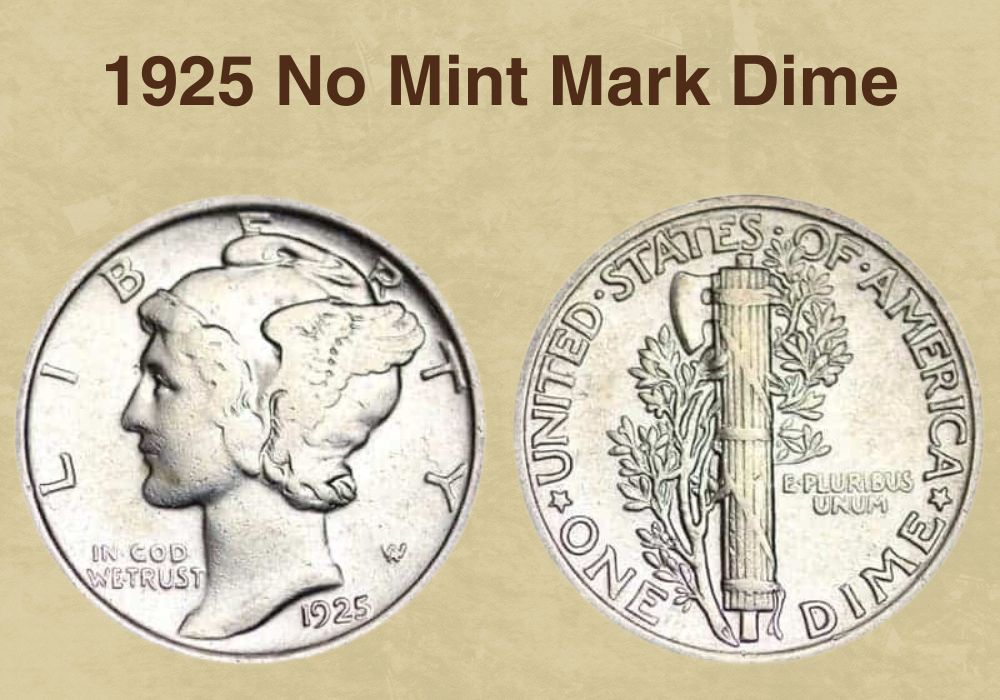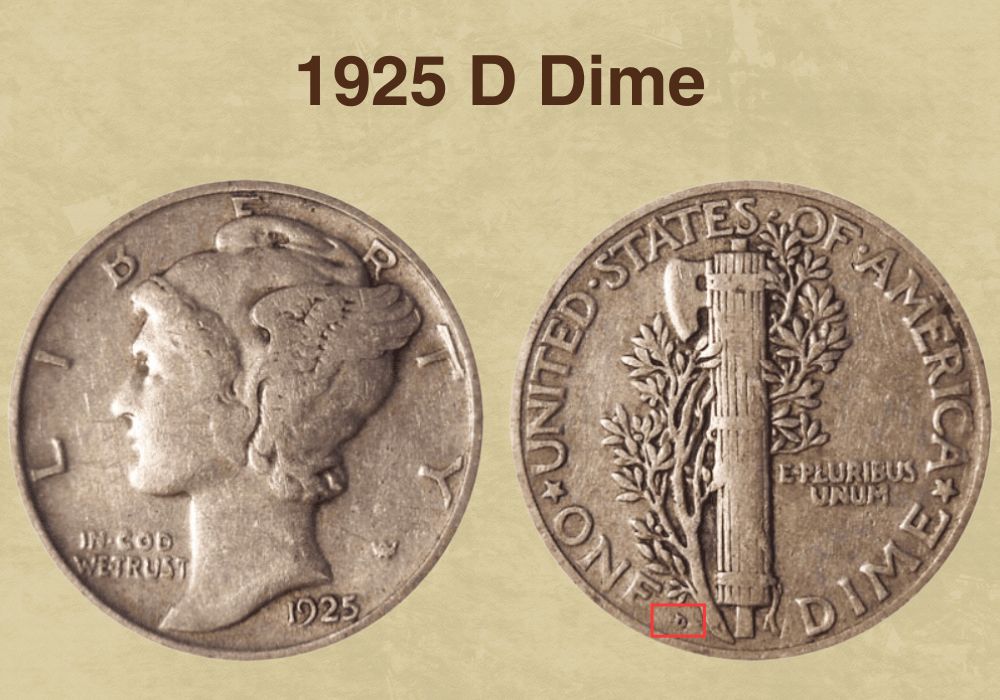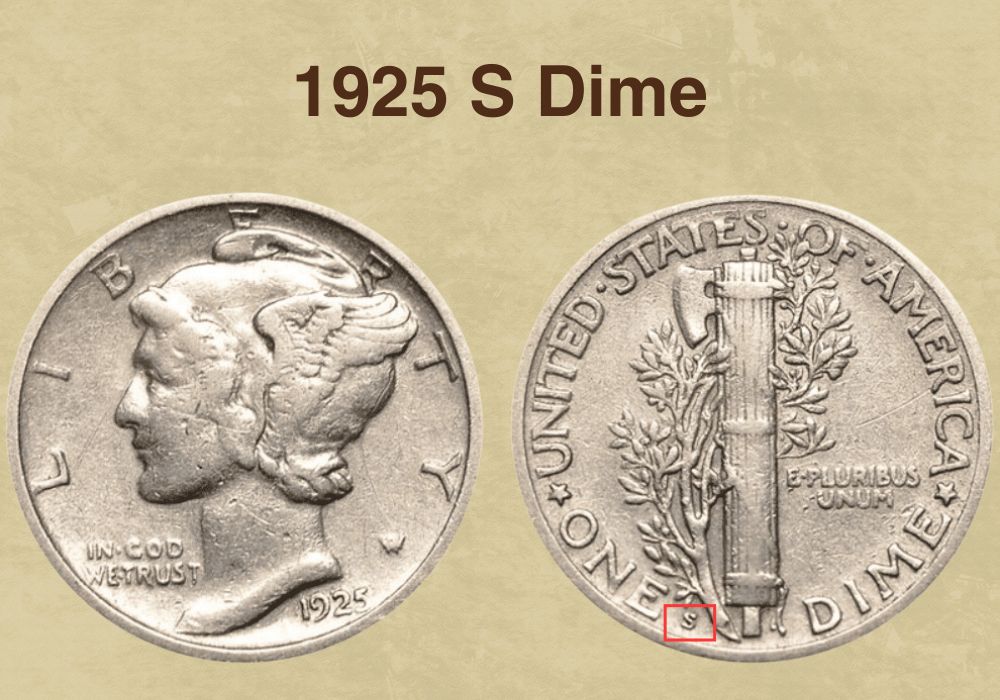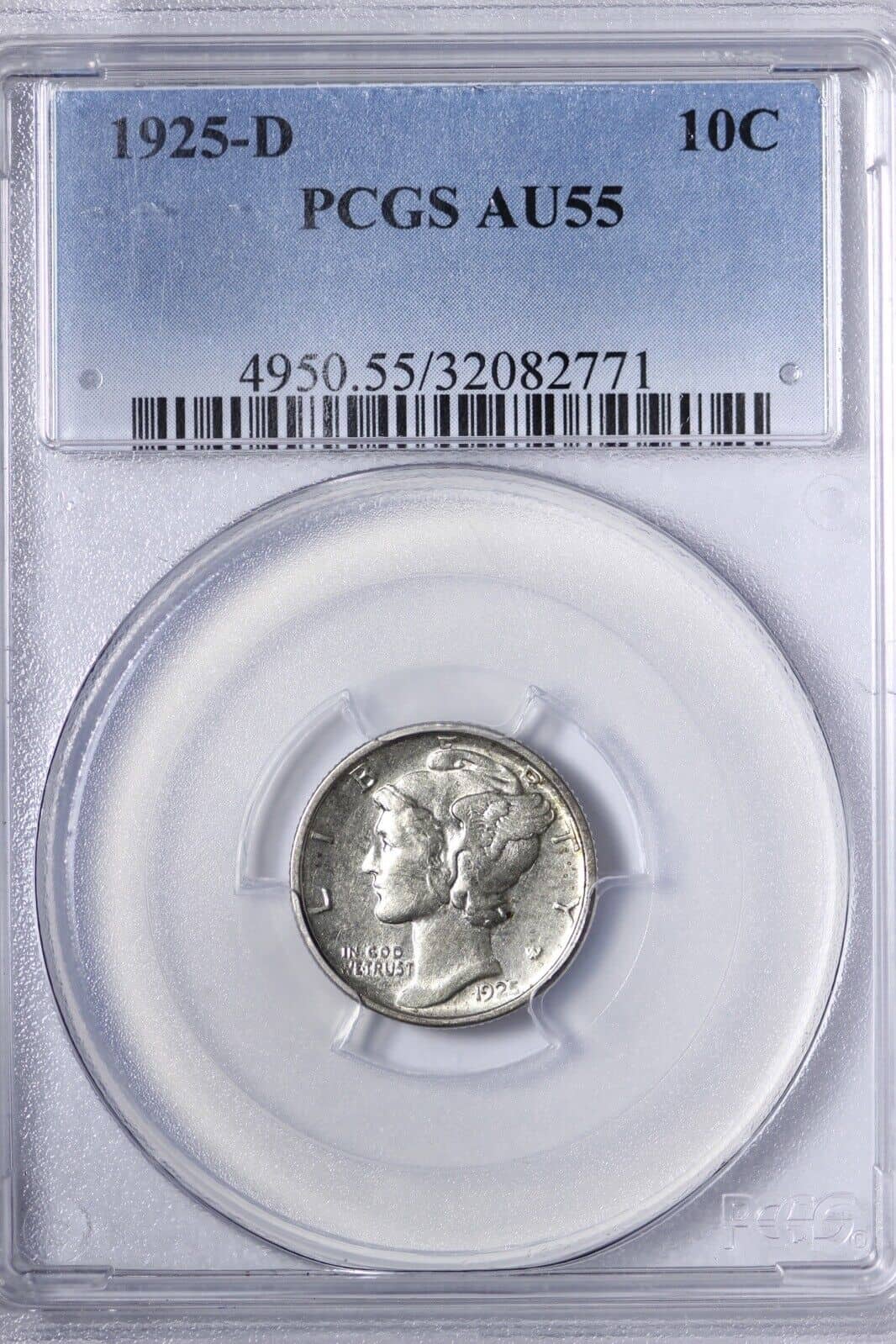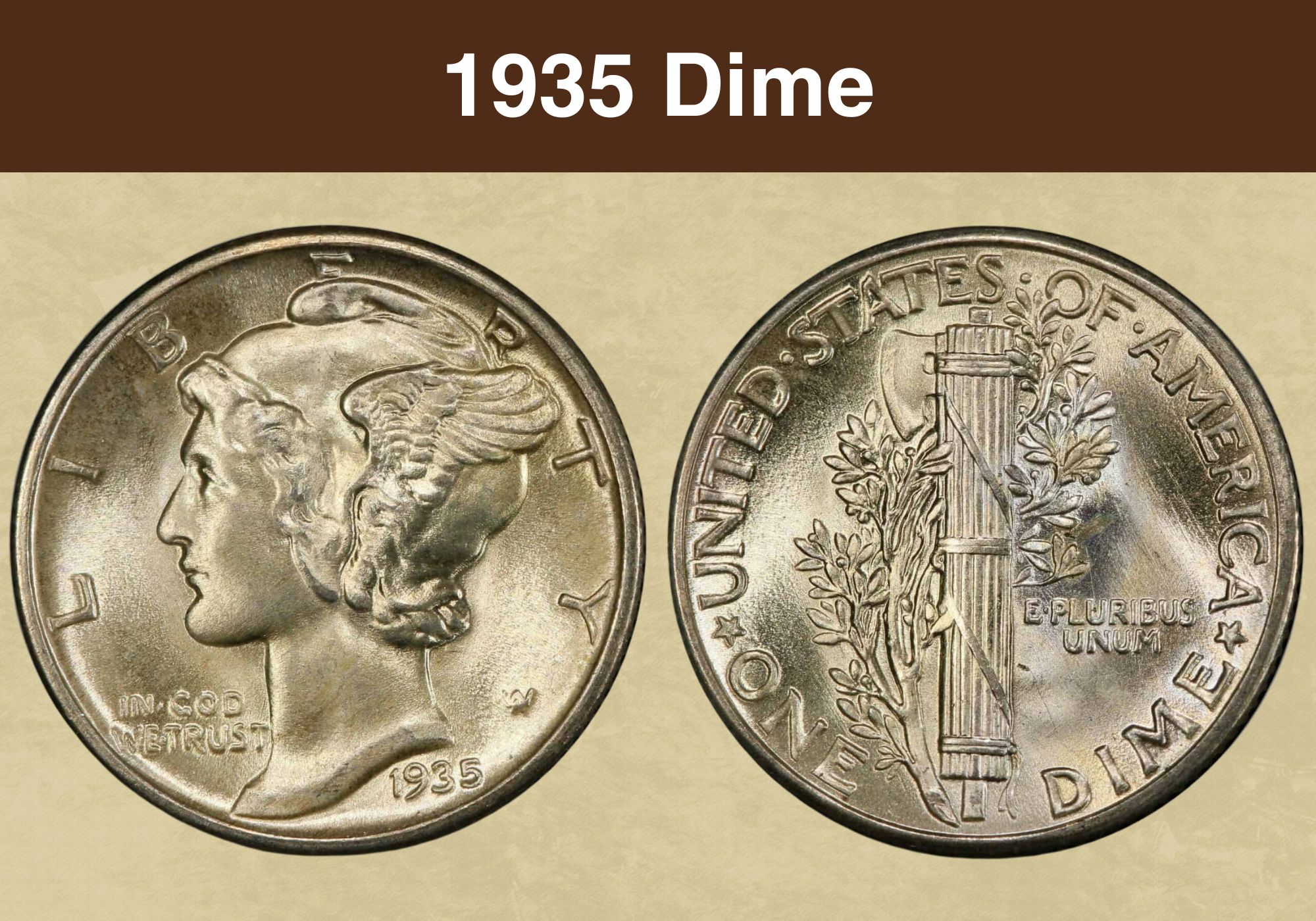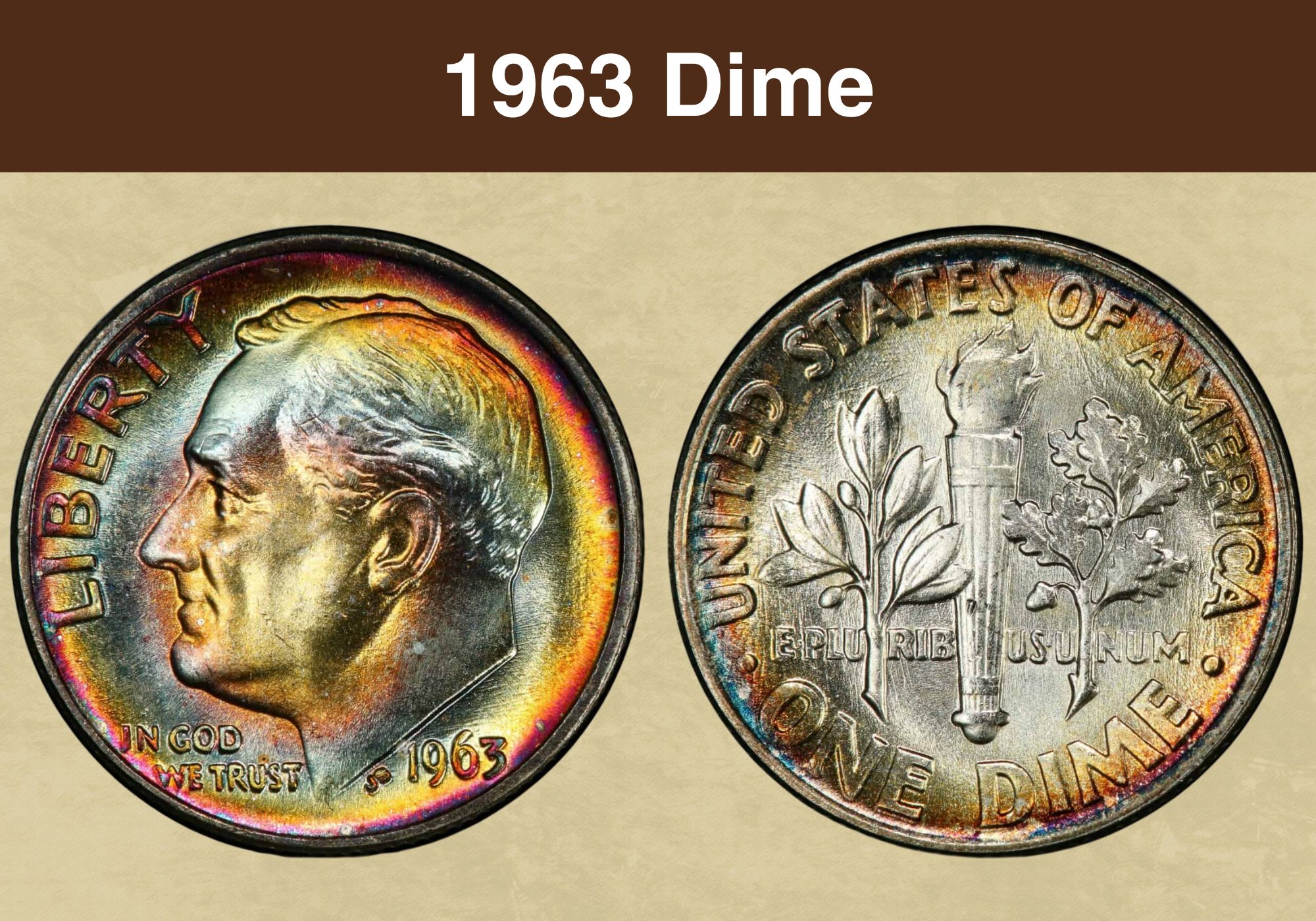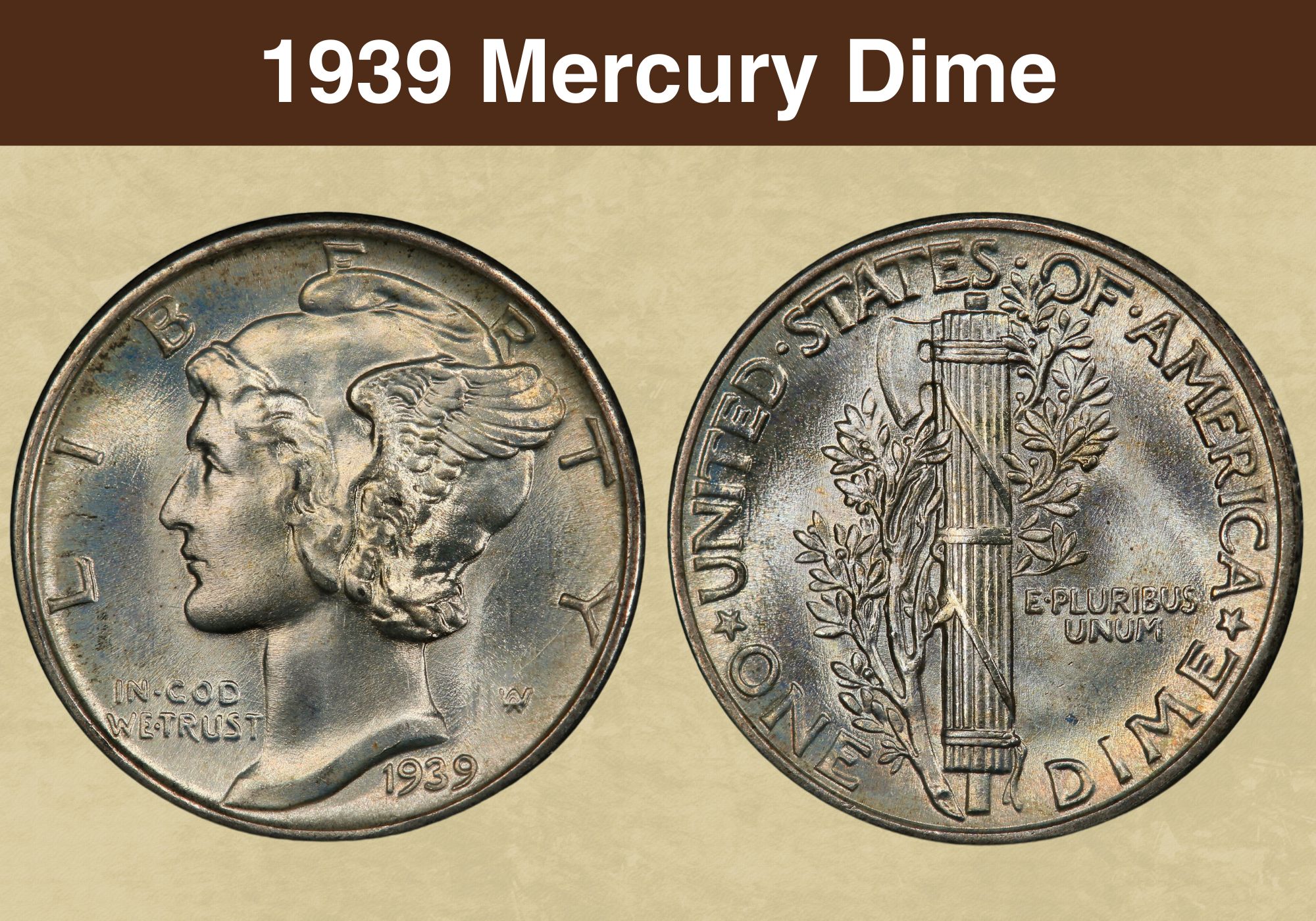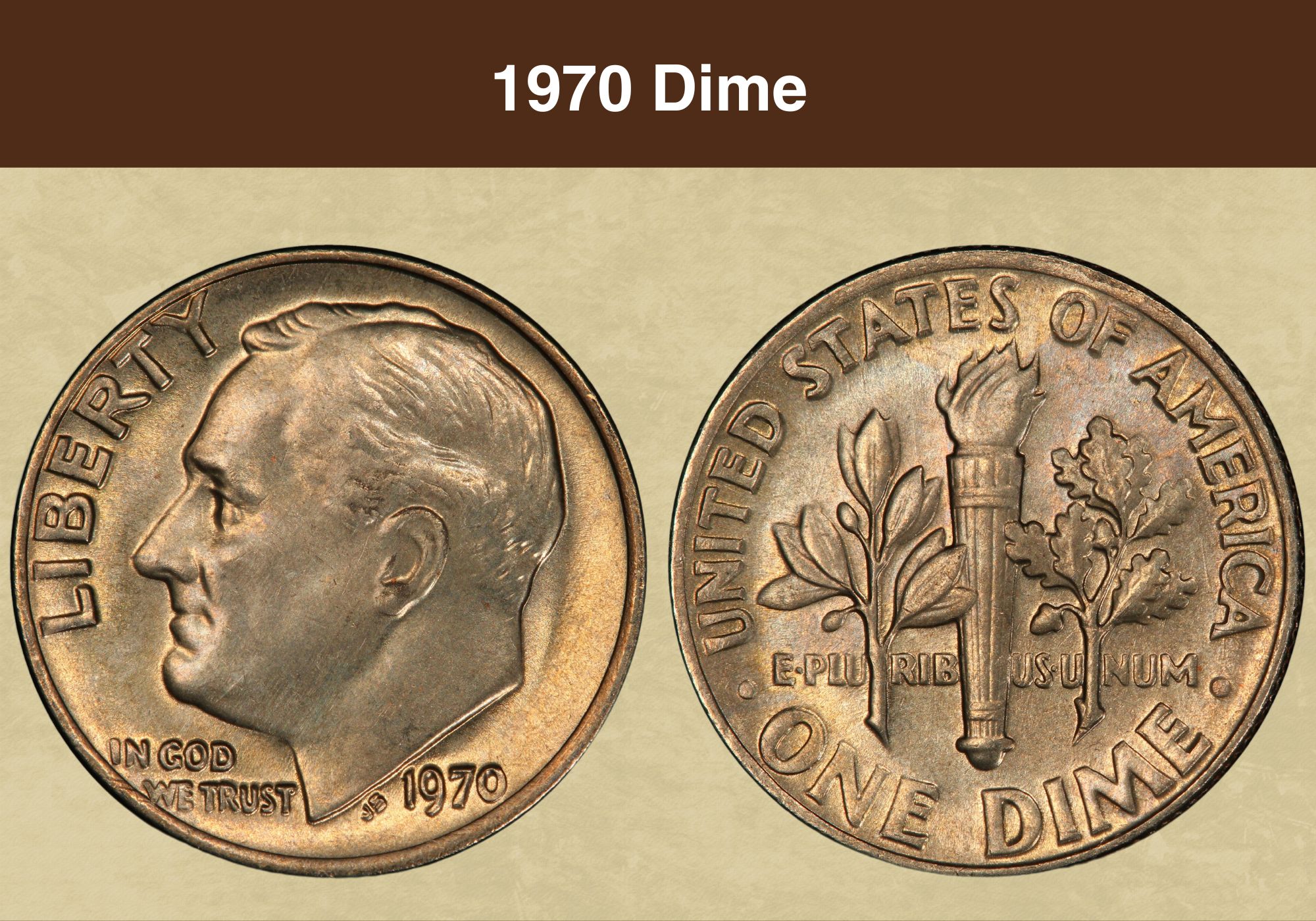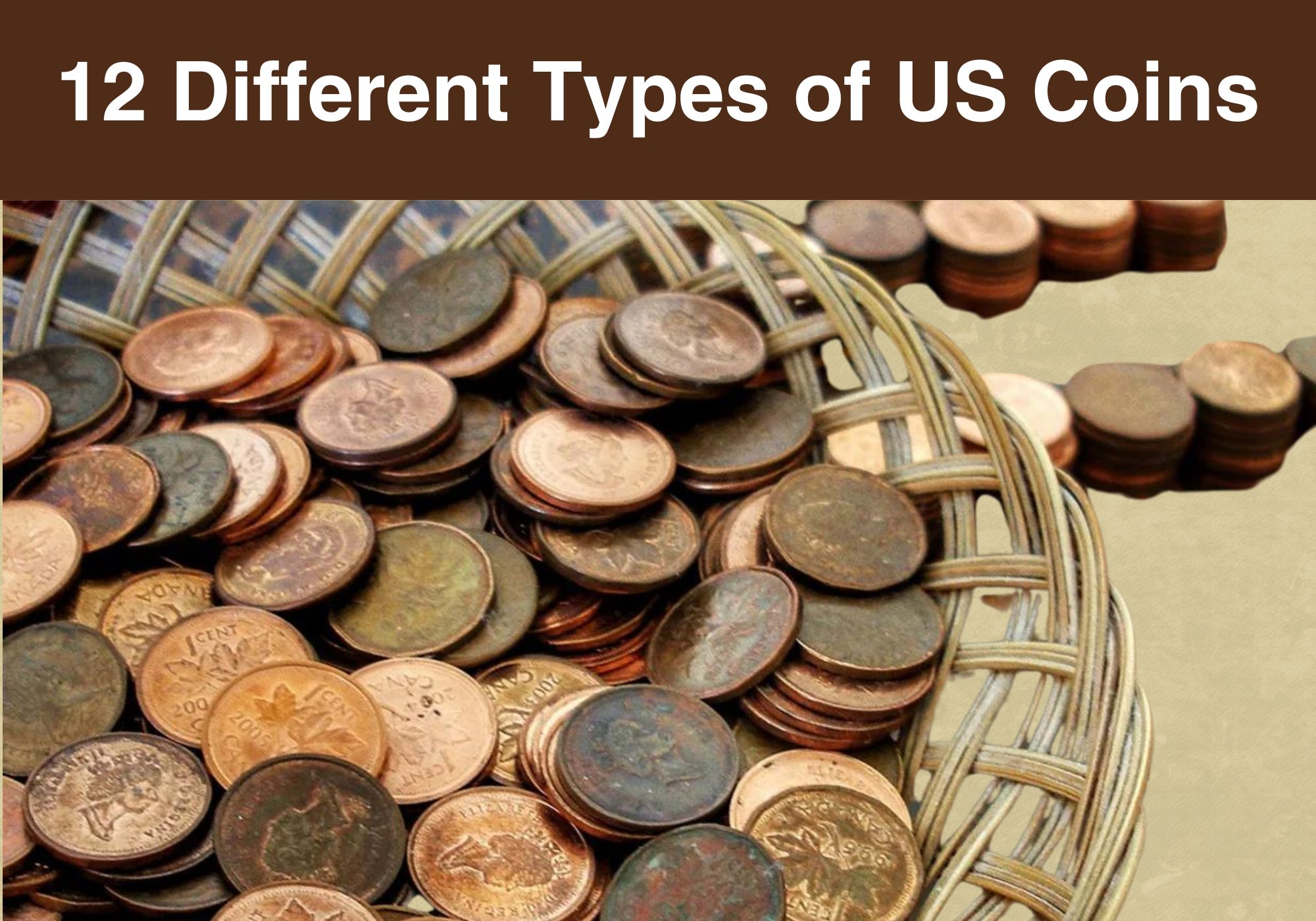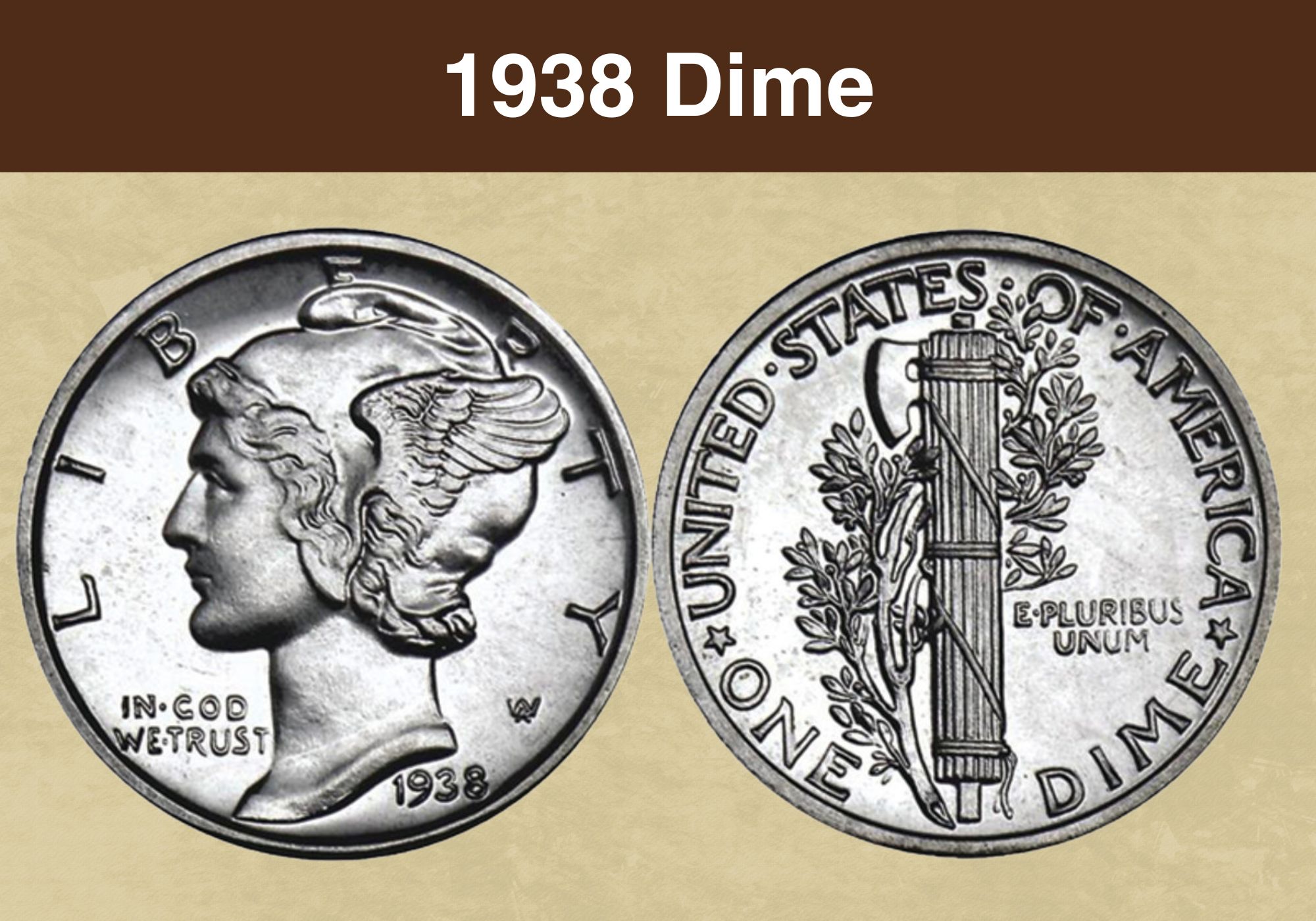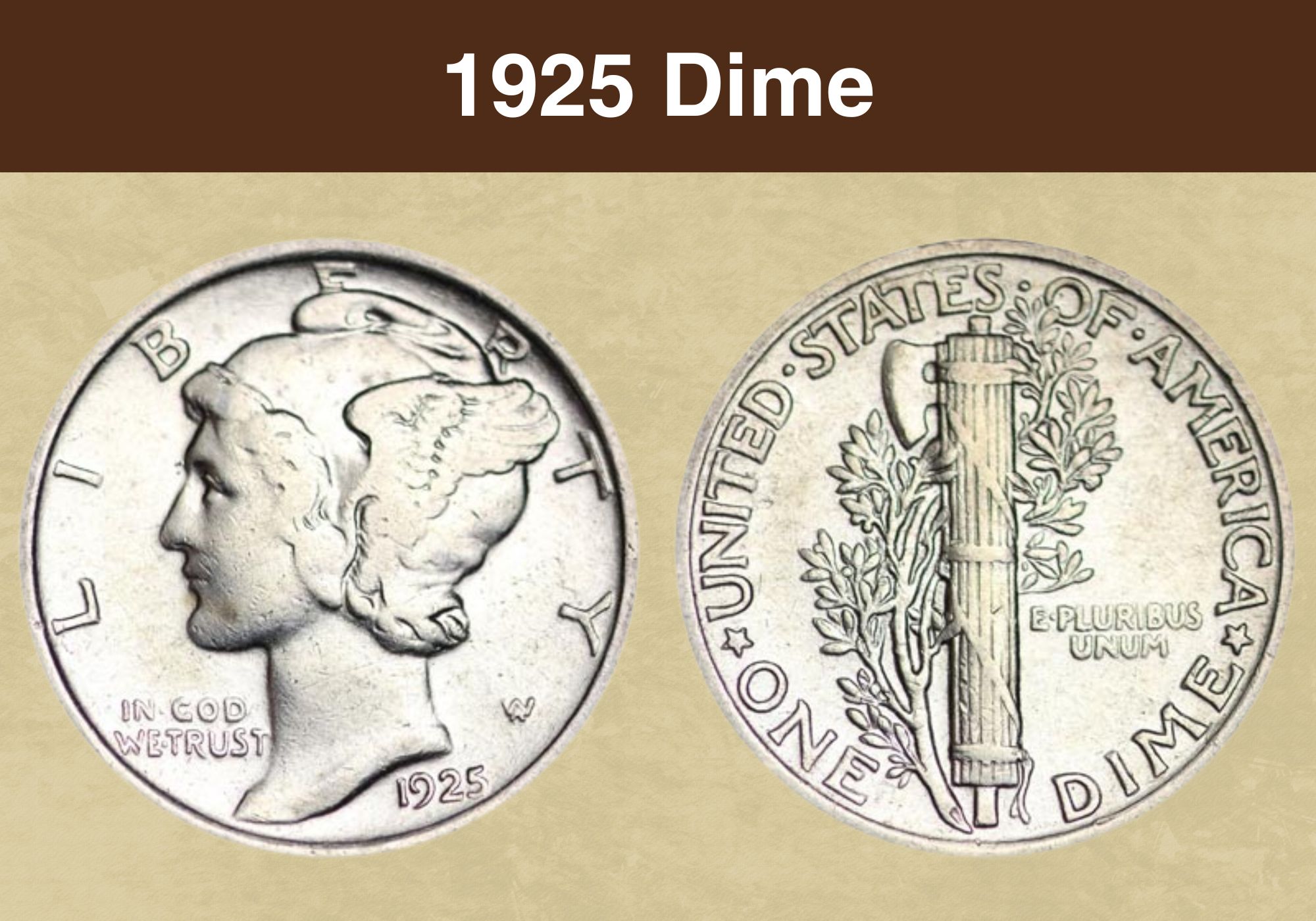
Coin Value Contents Table
The Mercury dime is considered an iconic U.S. silver coin. Not only is this small coin beautiful to look at, but it also stands for the ideals America is most associated with—liberty and peace.
Over a century since its first production in 1916, coin collectors everywhere still pay huge premiums to cop one of these Mercury dimes. Even issues known for weak strikes, like the 1925 dimes, are still of great interest and value to numismatic fans.
But what is the 1925 dime value like today? Has it grown over the years? Today, we will discuss the ins and outs of this coin, its different mint marks and errors, and how much it’s worth in modern times. Let’s dive in!
1925 Dime Value Chart |
|||||
| Mint Mark | Extremely Fine | AU58 About Uncirculated | MS62 Uncirculated | MS65 Gem Uncirculated | MS67 Superb Gem Uncirculated |
| 1925 No Mint Mark Dime Value | $12 | $25Full Bands:$40 | $80Full Bands:$165 | $375Full Bands:$1000 | $1,300Full Bands:$3,600 |
| 1925 “D” Dime Value | $139 | $325Full Bands:$500 | $750Full Bands:$850 | $2,000Full Bands:$4,500 | Full Bands:$21,500 |
| 1925 “S” Dime Value | $82 | $225 | $575Full Bands:$1,000 | $1,450Full Bands:$3,750 | Full Bands:$67,500 |
1925 Dime Grading
To check your 1925 dime’s condition, look at the highest points of the design. These include the cheek and ear of Miss Liberty on the obverse and the bands tying the bundle of sticks together on the reverse. If these elements look flat and have no shine, you likely have a circulated coin.
Uncirculated Mercury dimes are a lot easier to grade than other coins because of their small size. They won’t have that many contact marks because they’re lighter than silver coins of other denominations, so it’s easier to determine if they’re pristine and have no wear.
Here are some signs of a mint-state, uncirculated 1925 Mercury dime that can potentially be worth a high price:
- No traces of heavy wear from public circulation
- Only a few to no hairline scratches are visible on the surface
- Lady Liberty’s cheek and ear are bold and show no smoothness or flattening
- The intricate reverse design hasa sharp, clear strike, especially the fasces and bands
- The coin has overall superb luster and eye appeal
Having trouble figuring out if your 1925 Mercury dime is circulated or uncirculated? Check out this grading guide:
| # | Grade |
|---|---|
| 1 | Basal State-1 |
| 2 | Fair |
| 3 | Very Fair |
| 4, 5, 6 | Good |
| 7, 8, 10 | Very Good |
| 12, 15 | Fine |
| 20, 30 | Very Fine |
| 40 | Extremely Fine |
| 50 | About Uncirculated |
| 60 | Mint State |
| 65 | Mint State |
| 70 | Mint State |
Please check our grading guides to know your coin scale, It’s the necessary step to know the exact value of your coin.
Check out now: How to Grade Mercury Dime?
1925 No Mint Mark Dime Value
Although this coin is endearingly called the “Mercury” dime, the Greek god of commerce isn’t actually on it. Instead, designer Adolph Weinman depicts the portrait of Lady Liberty on this dime.
On the obverse, Liberty looks to the left. She wears a winged cap, known throughout history as the Phrygian cap—a cap freed slaves used to wear in ancient times to indicate their freedom. It’s the perfect accessory for Miss Liberty, who symbolizes that very ideal.
It is said that Weinman designed this image of Liberty based on a bust he made of Elsie Kachel Stevens, one of his apartment tenants, a few years before.
All around the obverse, the word “LIBERTY” is spelled out. Under Lady Liberty’s chin, the motto “In God We Trust” is written. And right below her truncated neck is the coin’s mintage year. On the obverse’s four o’clock corner are the initials of the designer, “AW.”
The reverse of the coin is just as stunning and impactful. It depicts a Roman fasces, or a bundle of wooden sticks from which the sharp blade of an axe emerges. This fasces is covered with olive branches, symbolizing peace.
Around the coin’s reverse are the words “UNITED STATES OF AMERICA” and “ONE DIME.” On the right side of the fasces is the Latin motto “E pluribus unum.”
Some Mercury dimes are given a Full Bands designation when the three sets of twin bands holding the bundle of rods are clearly split and separated. This requires a bold, razor-sharp strike, so it’s only given to some mint-state dimes. Coins with Full Bands are more valuable than those without.
In 1925, the Philadelphia Mint struck the highest number of Mercury dimes. It produced a total of 25.6 million dimes. Although Philly-minted dimes of the 1920s were known for being well-struck, the 1925 issue was an exception. Most if not all 1925 (P) dimes had a weak to average strike.
Because of that, 1925 (P) dimes are readily available in worn, circulated conditions. But because there are also so many mint-state, uncirculated 1925 (P) dimes in the market, circulated ones are quite low in value.
In poor to average condition, this coin is worth just $3 today. An extremely fine 1925 (P) dime can be worth $9. In AU58—the highest about-uncirculated grade—it can cost $25 without Full Bands, and $40 with that designation.
Although there are tons of mint-state 1925 (P) dimes in existence today, those with gem grades of MS65 and above are quite elusive and challenging to find. So, the prices of these coins increase exponentially in these grades.
In MS62, these dimes are worth $80. Three grades up at MS65, and you can expect them to hit a value of $375. Of course, with a Full Bands designation, these prices go higher. MS62 and MS65 1925 (P) dimes can cost $105 and $700, respectively.
But at the end of the day, it’s the elusive gems with high mint-state grades that are the most valuable among all 1925 (P) dimes. At grade MS67, this dime is worth $1,300. And with a Full Bands designation, the price shoots up to $2,500.
1925 D Dime Value
The Denver Mint produced the least dimes in 1925, making about 733,000 fewer coins than the San Francisco Mint. The total at Denver that year was 5.1 million dimes.
You’ll know that your 1925 dime was minted in Denver if it has a small “D” mint mark on the bottom periphery of the reverse, right next to the “E” in “ONE.”
1925 D dimes are among the most weakly struck in the entire Mercury dime series. That said, it’s still incredibly valuable today because it is scarce across all grades, owing to its low mintage. Even worn pieces are hard to find, especially in fine condition or higher, so they hold high value today.
In fine condition, a 1925 D dime is worth around $15. In extremely fine condition, the price is over ten times that at $139. About-uncirculated dimes with grade AU58 are valued at $325, shooting up to $500 when they have Full Bands.
If circulated pieces are hard to find, mint-state 1925 D dimes are even more elusive. Even in low mint-state grades, uncirculated 1925 D dimes are valuable because of how rare they are. The value is even higher when the coins are given a Full Bands designation.
At a low mint-state grade of MS62, a 1925 D dime will cost $750. With Full Bands, this price increases to $850. Meanwhile, an MS65 gem is worth $1,900—with Full Bands, it skyrockets to around $3,750.
At a near-pristine grade of MS67 and with Full Bands, a 1925 D dime with this grade will cost a whopping $21,500 today. Only three coins have ever been given this fine grade plus the Full Bands designation. That’s very impressive for an issue known for its weak strikes.
1925 S Dime Value
The San Francisco Mint created several hundred thousand more dimes than the Denver Mint in 1925. They created a total of 5.85 million dimes. These coins have an “S” stamp as the mint mark.
Just like the Denver-minted dimes of that year, the 1925 S dimes had weak strikes across the board, thanks to a master die that wasn’t hubbed well. Regardless of whether these dimes were circulated or uncirculated, there was a distinct softness to the strikes, making Full Band issues rare.
Collectors from almost a century ago hoarded these coins when they came out. This is likely because San Francisco coins were always assumed to be scarce. Many of these coins still exist today.
In extremely fine condition, a 1925 S dime will cost approximately $82. In about-uncirculated grades, it will be worth anywhere between $124 (AU50) and $225 (AU58).
Mint-state 1925 S dimes are quite limited, especially those with a Full Bands designation. Those falling under the latter will usually have a weak obverse, but it doesn’t stop these high-grade 1925 S dimes from being extremely valuable.
In grade MS62, this coin will cost around $575. In MS64—the grade at which this issue is most common in mint state—the price nearly doubles at $1,075. At MS65, these coins are worth about $1,450. And with Full Bands, an MS65 will cost almost triple that at $3,750.
An MS67 1925 S dime is so rare that there is no estimate for its value that is on the money. Many of them exist only with Full Bands. These coins will be valued at $67,500.
Also read: Top 17 Most Valuable Mercury Dimes Worth Money
Rare 1925 Dime Error List
While the 1925 dimes are known for being less-than-perfect strikes, they’re surprisingly low on mint errors. There are only a couple of known errors to exist in this issue, so we’ll take a closer look at those today.
1925 Dime Broad-Struck Error
A broad strike error occurs when the coin sits loosely on the die collar before it is struck, so when the die does stamp down on it, it is struck out of the collar. The error is most noticeable on the edges of the coin, which will look a bit extended and blank.
A coin that is broadly struck will still show all its design elements, but it will look wider than most coins. It has a big difference with an off-center strike, which will not have its full design on the coin.
This error was once found on an AU55 1925 dime. Although the full design of the coin is still visible, the letters E and R on “LIBERTY” are on the brink of being illegible because of the broad strike. This coin ended up selling for over $100.
1925 Dime Lamination Error
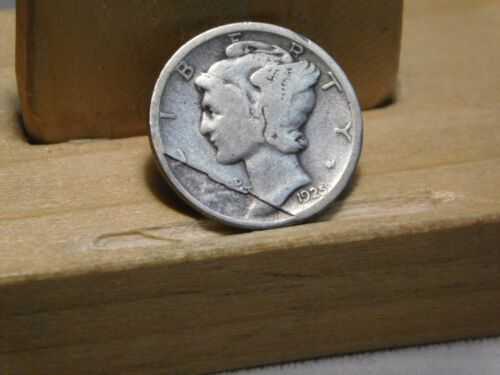
Lamination errors happen when part of the coin’s metal starts to crack and peel. This is usually caused by dirt or a foreign substance that had contaminated the metal before it was punched into planchets. Lamination errors can occur as soon as a coin is struck or years after.
A 1925 (P) dime was once found with a huge lamination error on its obverse, by the lower left-hand side of the coin. It had a heavily worn appearance but still sold for $29. It would have sold for even higher had it been in uncirculated condition.
Also read: 13 Most Valuable Dime Errors Worth Money
Where to Sell Your 1925 Dime ?
Now that you know the value of your coins, do you know where to sell those coins online easily? Don’t worry, I’ve compiled a list of these sites, including their introduction, pros, and cons.
Check out now: Best Places To Sell Coins Online (Pros & Cons)
1925 Dime FAQs
How much is 1925 dime worth?
Circulated and about-uncirculated 1925 dimes are worth anywhere between $24 and $293, regardless of where they were minted. Meanwhile, mint-state 1925 dimes without a Full Bands designation are valued at $35 to $2,750. Those with Full Bands can be worth up to $17,850.
What is a 1925 dime made of?
The 1925 Mercury dimes are made of 90% silver and 10% copper. These coins are therefore always tied to the current melt value of their silver fineness.
How can you tell if a dime is real silver?
A quick and easy way to check if your dime is made of real silver is by checking its edges. If there is a thin, copper stripe running across the edge of your coin, there’s a chance that it’s a clad copper coin only. If there is no such stripe, you can assume that the coin is made of real silver.
Where is the mint mark on a 1925 Mercury Dime?
You can find the coin’s mint mark on the reverse of the 1925 Mercury dime. It should sit on the seven o’clock corner, right next to the letter “E” in “ONE.” If your coin has no mint mark, it means it was struck in Philadelphia.

